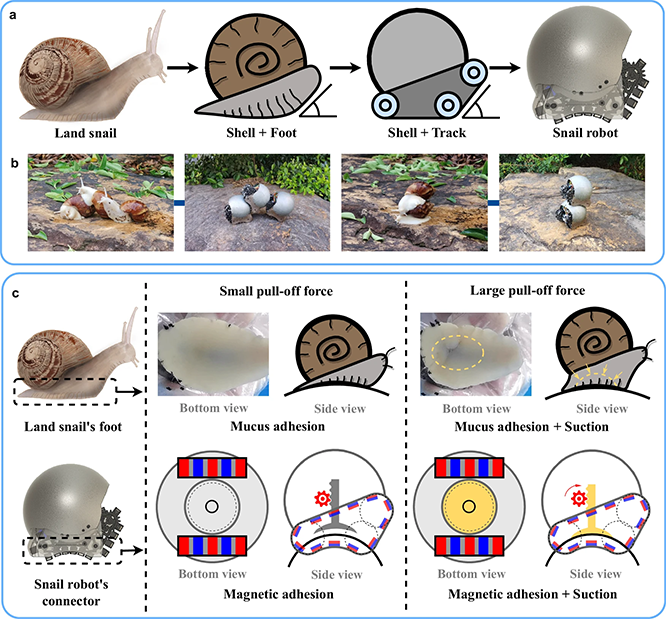The collaborative power of the animal world is pretty impressive at the best of times – from teams of orcas working together to bumblebees sharing knowledge and the strength in numbers that comes from a large flock. Inspired by this idea of animal swarms, researchers have developed robot snails that not only traverse the ground but can work together to tackle even trickier terrain.
Inspired by white jade land snails the team have developed a swarm of snail-like robots with the ability to climb over just about anything. The robots have two modes: free mode allows the snail robots to use lightweight rubber tracks to cover the ground, while strong mode employs a vacuum-style sucker that allows the robot snails to adhere to one another, helping them cross more challenging obstacles in their way.
Typically, robots are tested in indoor environments and have limited applications to crossing the more difficult areas of ground in the outside world. Additionally, existing swarm robots generally connect at only one point, giving limited capabilities.
Land snails have a unique ability to traverse difficult terrain and climb vertical surfaces with their single foot. And since they also occasionally combine for breeding, the team were inspired to develop a robot that could adhere to multiple points of the iron shell of another robot while also retaining the capabilities such as climbing over difficult ground as an individual.
The team created a connector for the snail robot swarm inspired by the mucus adhesion and suction force of real snails. The robots have magnetic adhesion to connect to the shells of other robots and a vacuum sucker for a more secure attachment – this is known as dual-mode attachment. In “free mode” the suction cup is not used, allowing the robot to move as an individual on their tracks, however in “strong mode” the suction cup is used to hold two robots together.

The inspiration behind the robot design.
The snail robot has magnets embedded with the tracks for locomotion, the magnets allow the robot to adhere to another robot’s shell, this can happen multiple times with multiple robots, allowing them to collaborate as a swarm to cross ditches and build bridges out of themselves.
The team suggested that the robots could be used in search and rescue situations, or for environmental monitoring.
The paper is published in Nature Communications.
Source Link: Snail Robots Inspired By The Real Thing Can Traverse, Climb, And Work Together